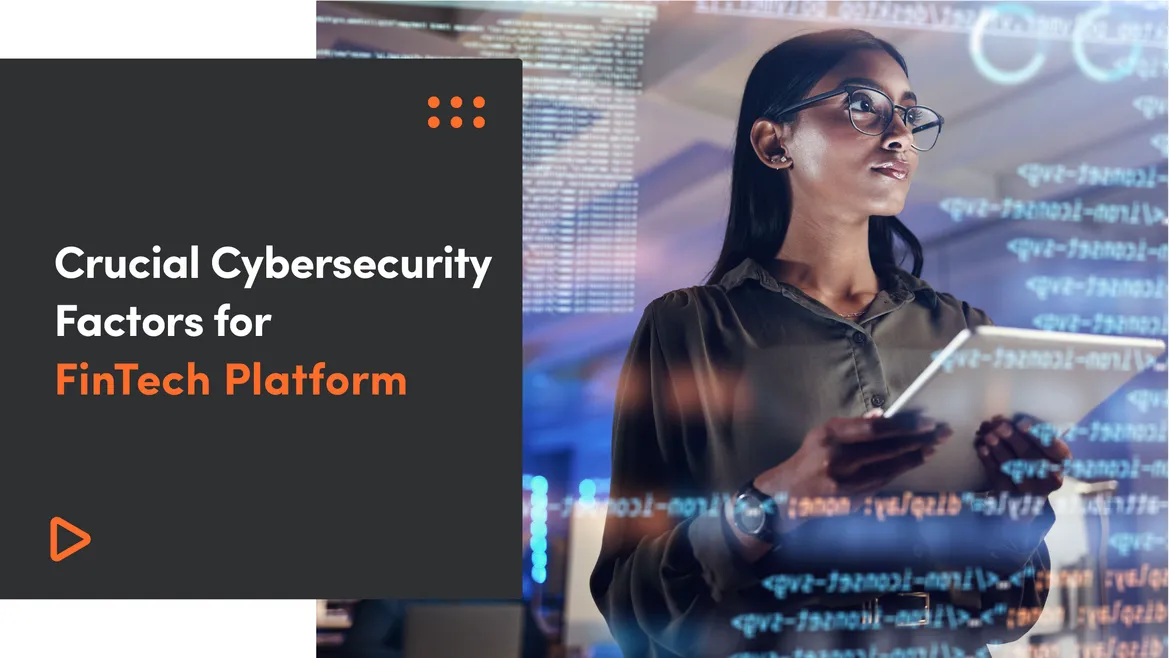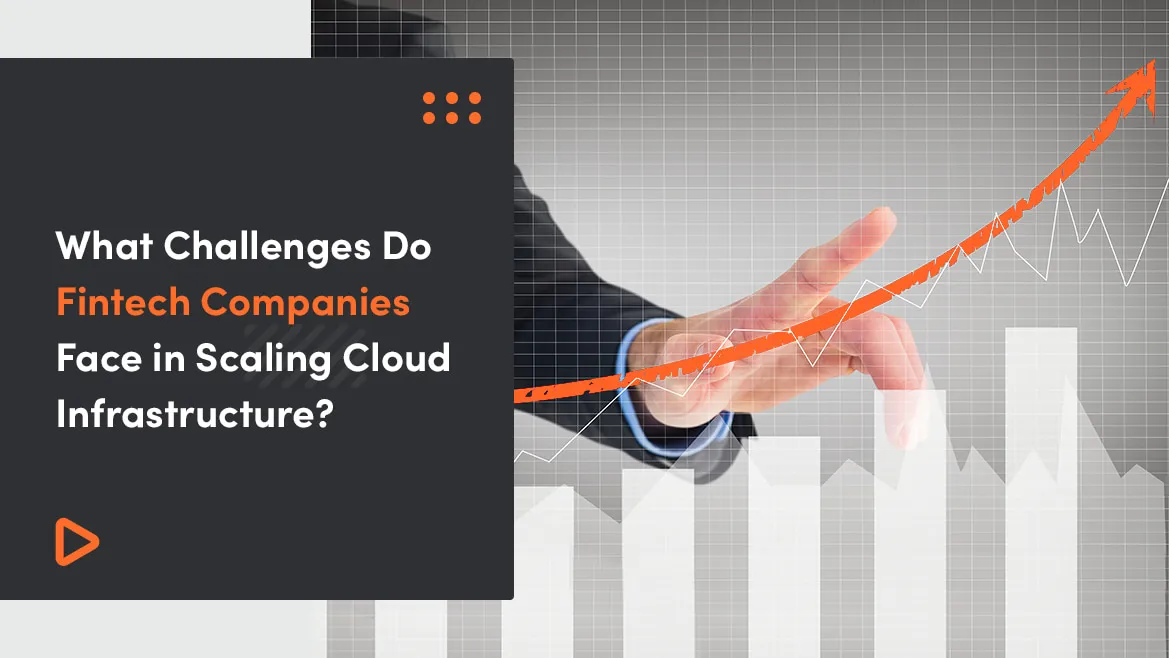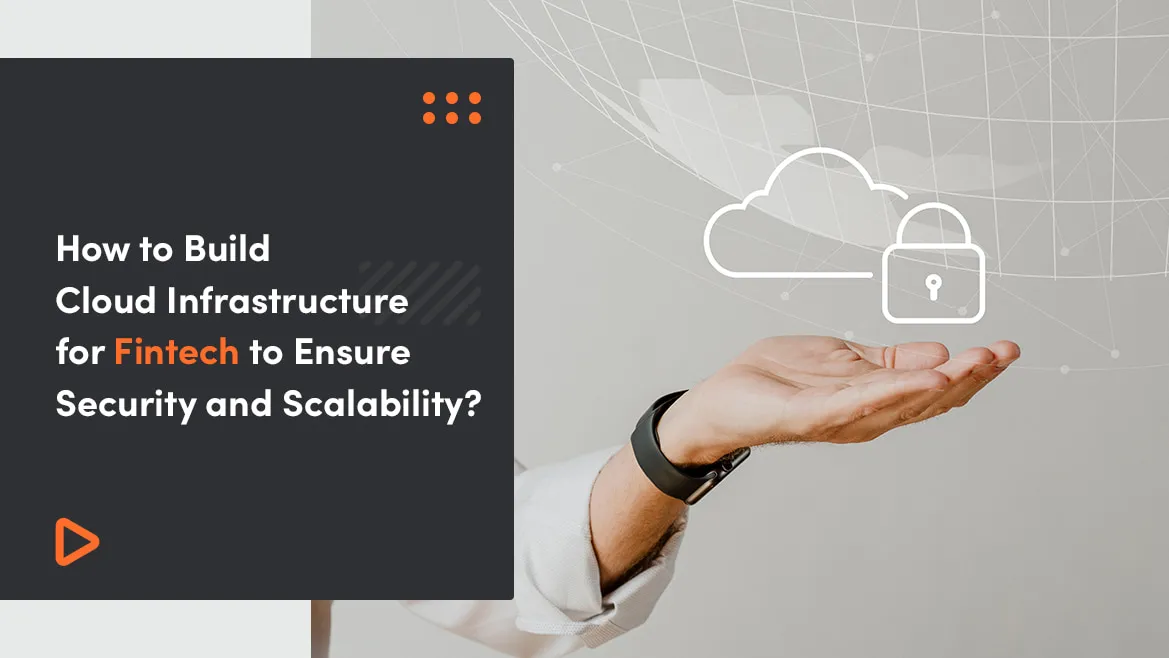Creating a secure fintech application seems like a challenge with a lengthy, and costly process.
According to Atos, a European multinational information technology services and consulting corporation, $50 billion is invested in fintech annually. According to another Allied Market Research analysis, worldwide fintech will be worth $698.48 billion by 2030. By the end of Q1 of 2023, fintech has been the most invested industry behind with over $14B in funding.
Rising client demand for e-financing, a spike in the implementation of fintech in banks and other institutions, and increased usage of the internet in daily life are the elements driving the worldwide expansion of the fintech business.
Based on the data shown above, it is apparent that the financial services industry has seen a remarkable transition in recent years. Because the sector involves sensitive information of fintech companies and individuals, it is a significant target for hackers seeking rapid cash advantages. As a result, the fintech industry must pay attention to cyber security threats.
The development team must have relevant experience and knowledge of fintech security requirements. If they don't, the project is vulnerable to hacking or infiltration by cybercriminals.
Read on to learn about the critical cybersecurity policies, tools, and methodologies needed to create a fintech platform. In this article, you will learn:
- What are fintech cyber threats?
- What are fintech cybersecurity challenges?
- Cybersecurity vs. Software Development - the integral part of the development process
- How to improve cybersecurity in Fintech? Tips for fintech and banking businesses
- Cybersecurity checklist in 2023
- Top fintech security technologies
- Fintech regulations and policies
What are FinTech Cybersecurity Threats?
Financial institutions have historically drawn thieves like a magnet. The first bank theft took place in 1831. Since then, banking has been transforming into fintech financial institutions, making considerable inroads into the digital realm.
Statista, a multinational personal and financial data-collecting company, says:
When comparing 2021 and 2022, Financial Institutions security grew from 24.9% to 23.6%, as did Social Networks security from 23.6% to 12.5%, while SaaS and Webmail security decreased from 19.6% to 20.5% as APIs became more hackable and inadequately secured.
The following are some of the cyber security risks confronting the FinTech industry:
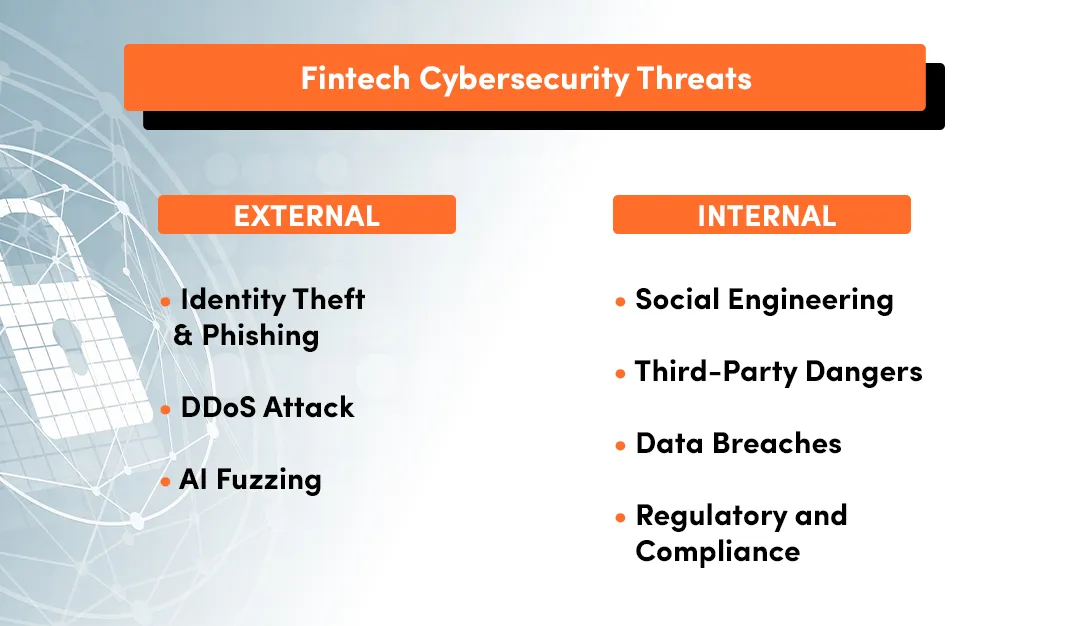
External Cyber Security Threats
There are external risk factors that FinTech must consider. Here are the details of the most important ones.
Identity Theft & Phishing
Hackers extort or hack one's login details and imitate account holders in order to get unauthorized data access and steal funds. This is often accomplished by API hacks aimed at compromising authentication tokens.
As a result, having a strong verification becomes crucial in any fintech's security strategy.
Distributed Denial of Service Attacks (the Infamous DDoS Attack)
A DDoS attack occurs when hackers aim to infest a website or app with traffic. They are extremely harmful for fintechs considering that many APIs do not have rate-limiters. Rate limiters regulate the frequency or quantity of user or IP requests and hence aid in preventing distributed denial of service attacks.
AI Fuzz Testing (AI Fuzzing)
AI has constantly shown to be a valuable resource for fintechs worldwide. However, it can also aid hackers' risk factors since they discovered a technique to scramble APIs via AI Fuzzing.
The purpose is to mislead APIs with random pieces of erroneous or critical data to detect errors, crashes, and memory leaks.
Internal Cyber Security Threats
Staff who violate information on purpose, employees who mistakenly expose confidential details, or employees who have been deceived into providing access to critical financial data are all insider threats.
To guard against threats from insiders, it is necessary to implement a thorough cybersecurity policy.
Regular staff training sessions, background checks for new hires, and stringent access restrictions should all be included in this policy. Monitoring staff behavior for any questionable conduct is also a good idea.
Attacks Using Social Engineering
Social engineering is persuading others to give confidential data or undertaking acts that potentially jeopardize security. This can take various forms, such as phishing, pretexting, and baiting.
Third-Party Dangers
Third-party risks are those connected with a breach or other security events caused by a third-party vendor or partner.
A cybercriminal, for example, may acquire access to a fintech company's system through a flaw in an outsourcing company's system.
To protect against third-party risks, properly verify suppliers and partners before dealing with them.
This should involve background checks and examining their security policies and practices. Contracts with third-party contractors should contain cybersecurity provisions. This involves reviewing their security posture regularly to verify they meet those criteria.
Important Company Data Breaches
Fintechs collect vast quantities of data from their users, both private and financial, such as credit card information, bank account numbers, and even responses to security questions.
As a result, their databases are a real hacker honeypot, with hackers able to use or sell the information.
Malware and phishing assaults are the most common means of accomplishing this. API endpoints are being targeted. Therefore, verifying every consequence and risk of API misuse is critical.
Regulatory and Compliance
Security and regulatory compliance are critical in creating FinTech apps, and errors can lead to disaster. Even the biggest financial services sector may be fined by the FCA or become victims of hackers, as Finastra did in March. What's particularly concerning in this issue is that Finastra collaborates with dozens of major banks, and the company's difficulties potentially affect millions of consumers.
Try our developers.
Free for 2 weeks.
No risk. Just results. Get a feel for our process, speed, and quality — work with our developers for a trial sprint and see why global companies choose Selleo.
What are FinTech Cybersecurity Challenges?
While this expansion has brought many benefits, it has also created certain cybersecurity risks that FinTech companies must solve to secure their clients' data and preserve the confidentiality of their activities.
Malware Attacks
Malware, unlike other sorts of intrusions, can penetrate a system via a variety of access points, including email attachments, third-party software, malicious websites, and pop-ups. Once the user clicks on a link sent via a malicious app or email, their entire system can be compromised.
Identity Theft Attacks
Banks and financial institutions frequently rely on authentication techniques such as biometrics, one-time payments, and passwords to protect security and validate identification. These approaches, however, are not infallible as they can be copied, allowing hackers access to funds. While these strategies are beneficial, banks and financial institutions must utilize a variety of verification gateways based on different concepts to prevent intrusion.
Money Laundering Risks
Due to their broad use in recent years, cryptocurrencies have emerged as a serious cybersecurity threat in the current financial environment. Because these digital currencies are anonymous and decentralized, they are vulnerable to misuse for unlawful uses such as money laundering, with the sources of the funds sometimes difficult to identify.
Considering these issues, banks and financial institutions dealing with cryptocurrencies must exercise prudence and implement safeguards to protect themselves from cyber security attacks.
Third-Party Vulnerabilities
Many FinTech companies depend on third-party vendors for services such as payment processing and information storage. These suppliers may have cyber security technological flaws jeopardizing the FinTech Company's data and systems. FinTech security solutions companies must do extensive due diligence on third-party contractors and ensure proper security measures are in place.
Insider Attacks
Insiders, such as workers or contractors, can constitute a substantial cyber security risk to FinTech companies. They may purposefully or inadvertently damage private information or systems, resulting in data breaches or other cyber security issues.
Compliance Requirements
The FinTech sector is regulated by various rules and standards, including the General Data Protection Regulation (GDPR) and the Payment Card Sector Data Security Standard (PCI DSS).
Compliance with these standards is crucial to preserve customer data, prevent financial crimes, and promote openness in the financial system. To avoid fines and reputational damage. FinTech enterprises must adhere to all necessary legislation and standards.
Cybersecurity vs. Software Development - the Integral Part of the Development Process
FinTech companies must prioritize security at every level of the software development process. From the beginning stages of design through post-deployment maintenance, every step should be done with security in consideration.
This method is more than just about stopping attacks - it also includes a proactive approach to identifying and addressing potential vulnerabilities before they can be exploited. Robust encryption, safe coding practices, extensive testing, security protocols, and regular upgrades are all key components of a secure fintech software development approach.
However, cybersecurity isn't a static field. As complex threats change, so must the security systems meant to protect from them. This is why fintech development services must have a dynamic approach to security, continuously learning from previous occurrences and adjusting to future dangers.
How to Improve Cybersecurity in FinTech? Tips for FinTech and Banking Businesses
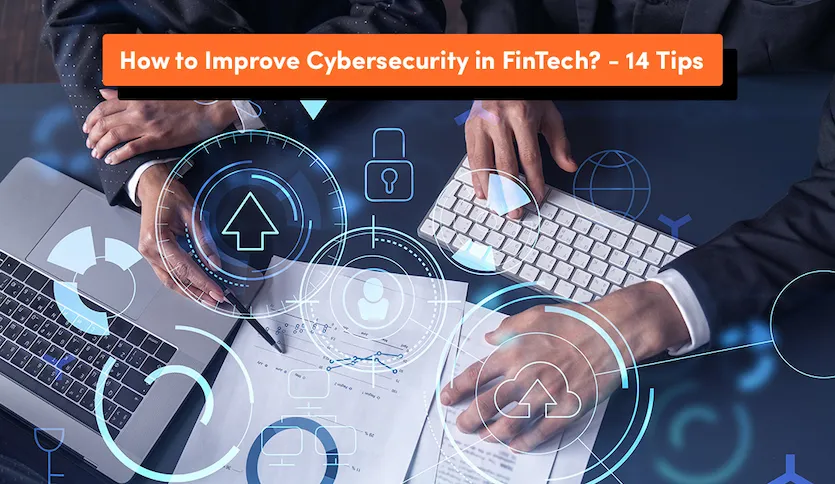
First and foremost, a financial business should begin with a strategy and a clear grasp of fintech solution requirements. Data protection for fintech applications should cover the following sensitive financial information:
Security Code & Encryption
The code is critical to application security. As a result, one of the fintech app security tips is to prepare ahead of time your security and how to respond to any potential faults or weaknesses in the application.
Whereas, encryption refers to the technique of setting up algorithms that convert data into code that can only be seen by the intended receiver. If the material is properly encrypted, unauthorized users cannot access confidential data without the decryption key.
Secure Data Transmission
Another critical procedure that necessitates the use of encryption methods. Various fintech industry-tested encryption algorithms are available on the market from which to pick.
- The AES (Advanced Encryption Standard) algorithm is among the safest and most resistant to cryptanalytic assaults. The US Federal Government employs it.
- The TripleDES (Triple Data Encryption Standard) algorithm is mostly used to encrypt credit card PINs and other passwords.
- RSA is ideal for small-scale fintech providers with limited data transfers and processing.
- Twofish is used for network applications with frequent key changes and programs that do not require RAM or ROM.
Multi-Factor Authorization
Basic safeguards such as a username and password will not be enough to access mobile banking apps. Businesses must ensure that the app includes two-factor authentication, which needs a step to log in: the user can enter a phone number, email, ID, Touch ID, or Face ID. This type of verification is also necessary to complete every transaction, regardless of the amount.
Roles and Permissions
FinTech applications contain several functionalities, but access to them is restricted to certain user profiles for security reasons. Role-based access control (RBAC) is a mechanism for creating roles and organizing permissions. It is simple to implement as it operates as administrators believe. ACL (Access Control List) is another model that lists all the operations a certain user can perform.
Payment Stifling
A payment-blocking function is an example of a security precaution that banks frequently implement to avoid financial fraud or money laundering. It operates so that the system stops any odd or suspicious transactions.
Quality Assurance
The testing phase of the software development process is critical. As a result, fintech app security solutions must include quality assurance engineers and ongoing testing. A few steps of testing should be included in the process:
- The first items that should be examined in places readily disclosed to the public are network devices, servers, and domain name systems. Furthermore, the emphasis must be on the operating system, the database, storage, and other systems vulnerable to attack.
- Provide internal testing to ensure that everything works properly on the client side. This includes testing the application while running in the browser to ensure no breaches occur.
- Server security testing is another type that must be performed to guarantee that proper frameworks and tools are used.
Tokenization
Information such as the card number, expiration date, and CVV are confidential and should never be maintained in a single database in cleartext. It makes it difficult for unauthorized individuals to access and view the data. Tokenization is a procedure that decreases the risk of identity theft and credit card fraud. It guarantees that critical card information is safely maintained in the database, whilst the app database just saves cardholder information such as names, addresses, etc.
API security
API tokens are crucial in mobile app security since they interact with back-end information and are accountable for functionality and data. One frequent practice for safeguarding an API is to establish an automated API token rotation.
Regulations and Policies
Another fintech app security rule is to follow regulations for information protection in the financial industry. Usually, they are based on a targeted market.
- General Data Protection Regulation
- The Financial Conduct Authority
- Electronic Identification and Trust Services
- Payment Card Industry Data Security Standard
- The Personal Information Protection Act
- ISO/IEC 27001
Zero-Trust Architecture (ZTA)
ZTA models differ from standard cyber security models that rely on constant verification. Users are provided access to conventional systems after inputting only one password. They are regarded as trustworthy. ZTA makes it easier to contain cyber security breaches and makes it more difficult for hackers to cause widespread havoc.
Blockchain Technology
Blockchains enable the development and maintenance of immutable data chains - ones that cannot be changed without leaving a record. This implies that users can generate traces of information that can be independently validated.
Artificial Intelligence and Machine Learning
AI (artificial intelligence) is a well-known abbreviation. Comprehending the shifting data security landscape that fintech organizations must traverse is critical.
Using machine learning, AI is becoming more capable of analyzing massive amounts of data to discover trends and flag possible financial fraud cases.
Fintechs, in particular, can utilize AI and ML to do things such as:
- Enhance their financial decision-making and integrate security.
- Detecting and preventing fraud.
- Support clients.
- Make financial projections.
Penetration Testing
It is essentially a simulation of a hacker's assault by a competent professional. Moreover, such professionals have access to the weaponry that real criminals use to penetrate security, allowing them to uncover holes in the system before the hackers use them to hurt the organization and its consumers.
However, pen-testers (short for penetration testers) are typically external specialists engaged for a single task who lack in-depth knowledge of the systems they deal with. They just cannot take the place of an internal cyber security staff.
Swift Reaction
In the worst-case scenario, an organization must maintain composure and prevent the business from becoming a cyber attacker's target. To respond appropriately to learning of a security breach, every organization must adhere to the following three fundamental rules:
- Describe the problem to monetary clients and business partners. Give all specifics, and be careful to identify the data theft. Don't forget to tell your users to implement strict passwords immediately and block their credit cards.
- Always cooperate closely with the local information commissioner.
- Ensure stronger security measures are in place and conduct a security audit to understand the history of the attack to prevent a situation like this from happening again.
Cybersecurity Checklist in 2023
Based on the experience of our highly skilled and professional developers working with FinTech companies, here’s a checklist that every company should consider in 2023.
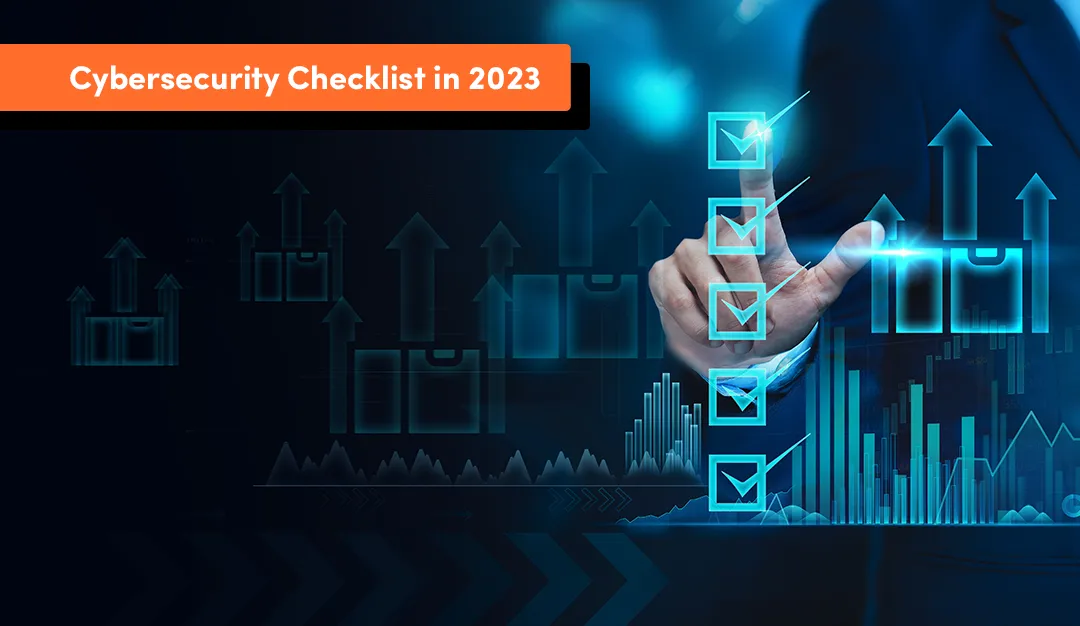
The following are the choices that guarantee user data is kept secure:
Keeping sensitive data safe during the integration process
Even if the difficulty of preserving client data may not be the cause of your sleeplessness, it is undoubtedly a reason for concern. You may rest easy knowing the following.
- Why even need data? Vendors using the APIs can do so with the client side hidden and protected. A further layer of defense against possible breaches can be established by limiting access to data.
- Why get Privacy? Strong data security measures, more flexible customization and configuration choices, and better regulatory fintech compliance are all things that private cloud computing can provide.
- Why multiply the protection? Multilayered data protection is an absolute must-have security strategy. Wrap up your defense with multi-factor authentication, ongoing cyber threat intelligence, firewalls, antivirus solutions, and encryption that meets NIST requirements.
Securing the cloud
When selecting a cloud service provider (CSP), it is critical to understand the Shared Responsibility Model (SRM), which specifies security duties for both the client and the CSP. While CSPs are normally required to manage infrastructure security, consumers must maintain firewalls and databases and monitor app access. Here are some more actions to take:
- Define security objectives clearly: Outline objectives for protecting sensitive data and limiting potential threats.
- Create thorough authorization policies: Define access levels, user roles, and authorization mechanisms to guarantee that only authorized personnel can access sensitive data or undertake crucial tasks.
- Put strict logging and monitoring rules in place: Set up real-time monitoring of system operations, security audit trails, and anomaly detection to notice and respond to security events or breaches as soon as they occur.
- Select the best encryption method: Based on the system's security requirements, choose the most appropriate data encryption model, such as symmetric encryption, asymmetric encryption, or hashing, to guarantee data stays secret and protected from unauthorized access or manipulation.
Securing APIs
Penetration testing professionals can perform regular security assessments to help detect weaknesses and improve cyber resilience. While many people see the importance of continual data security and consumer privacy monitoring, not everyone delivers it consistently and comprehensively. Include the following practices in your API care plan:
- API vulnerability management: API vulnerability management entails doing mandatory code reviews to avoid bad and vulnerable coding that can cause the worst fintech security challenges. A dedicated development team must have senior people with experience who can examine the code to the character.
- Implement a two-step validation process: Validation is used to prevent unauthorized access to sensitive data like passwords and API credentials. To maximize the effectiveness of this strategy, data must be validated both on the client and server sides.
- Keep an eye on API usage: Implement continuous and automatic API usage tracking to detect strange traffic patterns and prevent potential DDoS attacks or unauthorized access using compromised credentials.
- Set up rigorous API access restrictions and accountability: Implement efforts to reduce the risk of insider threats, such as credential stealing, document standardization, and validation.
Top FinTech Security Technologies
Fintech service providers are now proactively implementing the newest security technologies to ensure unbreakable cybersecurity for their products. Here is a list of the best technologies suggested for FinTech app development.
Secure Access Service Edge
SASE stands for Secure Access Service Edge and is a network solution that combines VPN and SD-WAN capabilities with cloud-native security mechanisms such as secure internet gateways, cloud security brokers, firewalls, and zero-trust network access. Furthermore, the SASE architecture supports network traffic analysis and detects dangerous digital data in fraudulent transactions, viruses, etc.
Artificial Intelligence
Fintech firms are currently utilizing machine learning to secure fintech app/s. AI algorithms may monitor network traffic databases and aid in the identification of malicious data streams, intrusions, and other risks. AI also aids in deeply studying consumer data leakages to evaluate potential clients' shortcomings, benefits, and so on. This helps fintech companies prevent risky consumers as well as potential unlawful operations.
Digital Currency
Cryptocurrency, or digital currency, is now at an all-time high. It is a crucial component of blockchain-based decentralized finance systems. The simplicity, comfort, and speed with which digital transactions can be done astound the business, but the security integration of digital money is the most helpful part of the Fintech sector.
Regulatory Technology
RegTech (Regulatory technologies) is the application of modern technologies to assist businesses in managing regulatory fintech compliance. This technology helps organizations comprehend regulatory requirements and monitor their content to maintain fintech security compliance.
Fintech Regulations and Policies

Cybersecurity standards for FinTech apps differ depending on your company's geography and market segmentation. Let us look at the most typical data protection rules in the financial industry:
- GDPR – is a collection of laws for preserving privacy in FinTech apps that process information about European Union people. GDPR is not limited to European companies only. If you intend to engage with EU residents or businesses, you must comply with this rule.
- PSD2 – The updated Payment Services Directive 2 law implies electronic payment services operations in the EU in order to enable fintech companies to safeguard their technology. According to the Deloitte Legal 2018 analysis, PSD2 and GDPR regulations overlap and lack clarity.
- eIDAS – is an Electronic Identification and Trust Services Directive. It aims to create a legal framework for safe transactions between FinTech organizations, corporations, governmental authorities, and end users.
- FCA – The Financial Conduct Authority (FCA) is implemented for overseeing financial services in the United Kingdom. This legislation aims to focus on consumer security and market integrity.
- GPG13 – The Good Practice Guide law applies to service providers and outsourcing firms working with the UK government system. This compliance manual is an important part of the official Security Policy Framework. It focuses on cybersecurity, event logging, and intrusion detection systems.
- APPI – The Act on the Protection of Personal Information (APPI) applies to financial technology companies that handle the confidential information of Japanese people. Just like GDPR, the law is extraterritorial. It applies to corporations that operate from other nations.
- PIPA – The Personal Information Protection Act governs private data security procedures for both private and public organizations in South Korea. Unlike all other laws on the list, PIPA offenders may face both financial penalties and criminal prosecution.
- PCI DSS – The Payment Card Industry Data Security Standard law applies to companies that collect, handle, and use credit card information. Visa and Mastercard, for example, require service providers to certify their offerings in accordance with these criteria. There are four levels of PCI DSS compliance.
- ISO/IEC 27001 – A collection of FinTech information security standards. It includes rules and procedures to assist organizations all over the world in establishing and maintaining secure data management systems. Cryptography, Access Control, Clear Screen, and Information Security are among its policies.
Summary
Fintech services are increasingly vulnerable to emerging risks ranging from social engineering to ransomware. Fintech startups are especially vulnerable to these security challenges. It is important to take cyber security very seriously, especially in fintech services.
To avoid these threats, creating powerful and critical economic infrastructures by educating employees and customers about cybersecurity best practices, keeping software up to date, implementing strong access controls such as biometric authentication, and managing risks using a cybersecurity framework is the right way to fight cyber threats.
